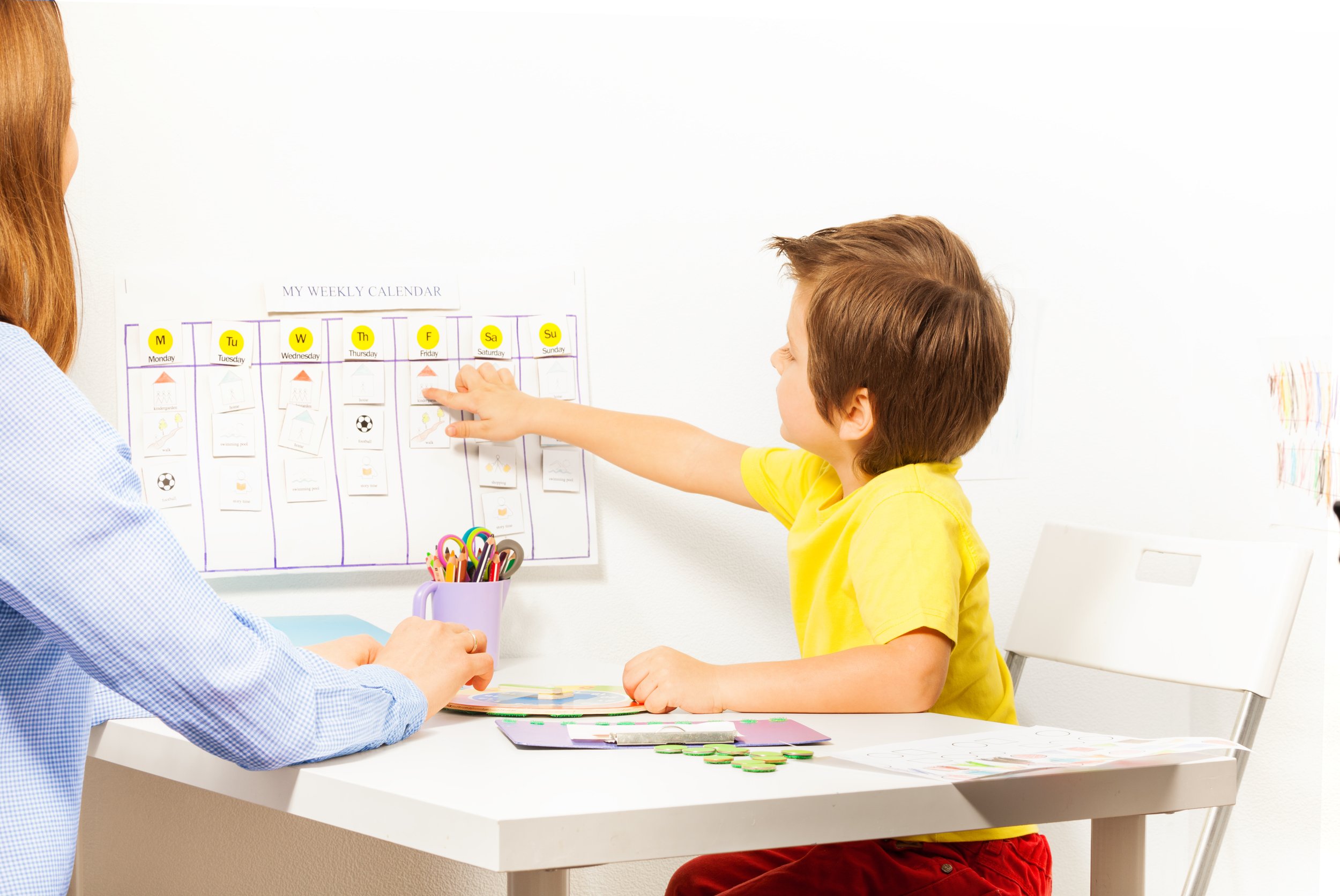5 Questions that Will Help You Plan Your Homeschool Year
Planning your homeschool year is about more than just making a weekly checklist or figuring out what to use for science. If you want your homeschool to grow with you and take your kids where they want to go, keeping these questions in mind can help you stay on track.

When you plan your homeschool year, you probably spend a lot of time on the nuts-and-bolts: What math curriculum will you use? How will you organize your days? What kind of output and assessments do you want to rely on? These planning pieces can be helpful, but they’re only part of the story — and for most of us, they’ll end up being the least important part.
“If you’re homeschooling, it’s usually because of something bigger than just curriculum,” says Felicity Sterling, a homeschool consultant in Chicago. “Defining what that ‘bigger’ is may be the difference between a successful, happy homeschool experience and one that leaves you unsatisfied.” There’s no one right way to plot your homeschool’s bigger picture, but these questions can help you figure out what matters most to you in that bigger picture.
Where do you want to be a year from now?
It’s easy to get so focused on getting through the year that you forget to think about where you want to be when you declare the year officially over — but the whole point of the journey is to aim for somewhere you want to be. Think about what would make your homeschool feel successful and productive: It might be getting into a groove with your schedule, or checking off some academic milestones, or being part of an active homeschool community. Really think about what you’d like your homeschool to look like when next summer rolls around — what do you need to do to get there?
What’s working great?
A lot of people get excited about trying new things when they’re in the middle of homeschool planning, and new things are awesome! But planning season is also an excellent opportunity to pause and reflect on all the things that really worked for your homeschool. These are the things you want to hang onto — whether it’s a schedule that kept the days running smoothly, a learning style that always clicked, or even a kind of notebook that everybody loved. Don’t get so distracted in the pursuit of the Next Great Thing that you lose sight of the things that are already pretty good. You want to make sure that in your excitement about trying new things, you’re not sidelining tried-and-true homeschool joys.
What are you doing because of other people?
It’s not that other people’s input is useless: If your mom thinks your 7-year-old needs more friends or another homeschool mom has had awesome success with the local forest school, that information may be useful for your homeschool — but it also may not. Part of successful homeschooling is being able to hear what other people have to say, take what works for you, and let go of the rest. Pay attention to how much of your plan is based on other people’s input — your sister-in- law’s concerns or that cool mom on Instagram’s plans — and be willing to adjust those plans first if things aren’t working. You know your kids best. You are their best advocate. Lots of people will have opinions, especially when they find out you are homeschooling. You just have to remember that you know your life better than they do.
What are you doing to build relationships?
Homeschooling can get complicated because you are both parent and teacher, but the beating heart of both of those roles is your relationship with your children. Yes, you have academic and social goals for your child, but make sure that you’re being intentional about building a relationship with her, too. Make room for the things you student loves, give her plenty of say in how her days are structured, and really listen when she gives you feedback on how things are going — especially if it’s not feedback you really want to hear. Bringing your kid into the planning process is one of the best ways to build a homeschool that works.
Where’s the fun?
What are you looking forward to? When you look at your plan, is there anything that makes you smile just thinking about it? If not, why not? One of the keys to successful homeschooling is enjoying what you do — if you’re slogging through a to-do list that nobody is excited about, you’re missing all the fun and possibility of homeschooling. There may be parts of your homeschool life that feel hard or challenging, but there should be at least an equal number of parts that feel fun and exciting. If there aren’t, it’s time to readjust your balance.
Whether you live to color-code or need a system that flexes and changes with your family’s needs, keeping good homeschool records is essential. And you can do it — all you need is a system that you’ll actually use.
Aminata and Malcolm have discovered that a purposeful morning routine is the perfect start to their homeschool day.
When your homeschool starts to feel like more work than fun, it’s time to make a change.
Jenn’s been struggling to find a balance between the structure and academics she needs and the fun, laidback vibe she wants her homeschool to have.
If your homeschool schedule isn’t making your life happier, easier, and more productive, isn’t it time to change things so that it is? Beverly has some great tips for creating a homeschool schedule that works for you.
Planning your homeschool year is about more than just making a weekly checklist or figuring out what to use for science. If you want your homeschool to grow with you and take your kids where they want to go, keeping these questions in mind can help you stay on track.
The best way to plan your homeschool year is the way that works best for your particular homeschool — and like all the rest of homeschooling, it may require some trial and error to find the right balance. That’s why our “perfect” planning method is adaptable as you need it to be: Use the skeleton to make a loose frame for the year, or go all out and plan every week in advance. It’s your homeschool. Make a plan that works for you.
A homeschool retreat can be inspiration, direction, and sanity saver all in one — and if you don’t have a secular homeschool conference nearby, you can create your own.
Chances are, you’re doing better with this whole homeschool thing than you think you are. These six signs are all indicators that you’re on the right track — and we think that’s something you should celebrate.
5 surprising ways to build a homeschool life that works for your whole family — including you. “If your homeschool isn’t giving you personal satisfaction most of the time, something needs to change.”
It’s easy to get so caught up in your everyday to-learn lists that you lose sight of the bigger picture of what you want your homeschool life to feel like.
Reinventing your homeschool is just part of the process, but this six-step process will help your homeschool grow in the ways that work best for your family.
Your official last day of school can be whenever you want—so pick a date that matches your family’s homeschool rhythm (or don’t pick a date and have a year-round homeschool).
Truly, the biggest hurdle to cobbling my own history curriculum together has been organizing the resources in such a way that I know where they are, I remember all of the ideas that I had, and I don’t leave anything out.
This easy organization method won’t stress you out and will make your life a whole lot easier when you start working on transcripts and other official paperwork for high school graduation.
Planning out your year doesn’t have to be scary or stressful.
February 11 is National Clean Out Your Computer Day, but do you really need an excuse? Get all those curriculum plans, worksheets, and other great ideas organized so you can find them when you need them.
What you can do is engage in the process of putting the spark back in your homeschool exactly the same way you started your homeschool in the first place: with patience, trial and error, and a little expert advice to get you started.
When you get that stuck-in-a-rut feeling — and we all do sometimes — these simple-to-pull-off changes can make your homeschool feel bright and shiny again.
Don’t let the fact that intersectional homeschooling is a work in progress deter you from making it part of your own homeschool.
“We loved the idea of living without a schedule, but we quickly discovered that we were miserable living without a routine.”
This is my go-to recommendation for new homeschoolers — it's designed to help you find your rhythm, build comfort with leading your students’ learning, and keep the learning going as you find your way. It’s basically a six-month, low-cost-investment guide to starting homeschooling.
We rounded up our readers' best tips to prepare for back-to-school.
A more rigorous homeschool involves pushing further and deeper across the curriculum.
Happiness comes more from our actions than our circumstances: about 40 percent of the average person’s happiness comes from things they do. So to get out of a rut, do something different. It’s almost too easy.
One of the most effective ways to feel happier and more productive? Working with your hands. Winter is the perfect time to start a new project.
You don’t have to do huge renovations to make your learning spaces feel brand new. Here are a few simple ideas that will breath new life into your school space this winter.
Sometimes when you feel stuck, setting a series of goals can help you break out of the blah.
In this five-part series, we’re helping you get through the midwinter slump in your homeschool. First up: Give your routine the boot, and try something new.
Amy Sharony is the founder and editor-in-chief of home | school | life magazine. She's a pretty nice person until someone starts pluralizing things with apostrophes, but then all bets are off.






























A creative learning space is less about actual stuff and more about giving your children space to explore ideas in different ways.